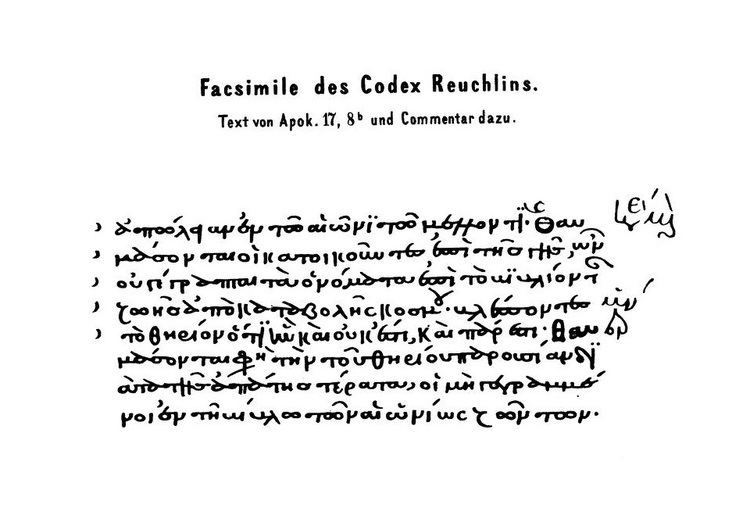Type Byzantine text-type | Date 12th century Category V | |
 | ||
Minuscule 2814 (in the Gregory-Aland numbering), Aν20 (in Soden numbering), formerly labelled as 1rK in all catalogues, but subsequently renumbered as a 2814 by Aland, is a Greek minuscule manuscript of the New Testament, dated palaeographically to the 12th century.
Contents
Description
The codex contains the Book of Revelation with a commentary of Andreas from Caesarea. Last six verses were lost (22:16-21). The text is written on a parchment in minuscule, in 1 column per page, 20 lines per page.
The Greek text of the Gospels is a representative of the Byzantine text-type. Aland placed it in Category V.
History of the codex
This codex was chiefly used by Desiderius Erasmus as a basis for his first edition of the Novum Testamentum (1516). It was the only Greek manuscript of the Book of Revelation used by Erasmus. Erasmus translated the missing last six verses from the Vulgate back to Greek for his editions. As a result its readings and his translation became a basis for the Textus Receptus. Erasmus borrowed the manuscript from Reuchlin, but it was lost for many years until rediscovered in 1861 by Franz Delitzsch.
The manuscript was included to a critical apparatus by Kurt Aland in his 25th edition of Novum Testamentum Graece (1963).
The codex was located in Harburg (Öttingen-Wallersteinsche Bibliothek), and was transferred together with the whole library to the library of University of Augsburg (I, 1, 4 (0), 1).
